Wednesday, February 28, 2018
Fiction: Seeking Asylum but Finding Heartbreak
from NYT > Books http://ift.tt/2GEIlYt
Children’s Books: In New Novels for Kids, Dangerous Journeys and Hockey Madness
from NYT > Books http://ift.tt/2GzBEa3
ITV Studios Boosts British Broadcaster As New Boss Reveals “Strategy Refresh”
from Deadline http://ift.tt/2GQgUuG
Britbox Scores 250K Subscribers Just Under A Year After Launch
from Deadline http://ift.tt/2GOI9Ga
FNC Cops Biggest Cable News Crowd For 194th Month; MSNBC Posts Year-To-Year Growth
from Deadline http://ift.tt/2CNLBOG
Sean Hannity, Tucker Carlson Set Record Straight On Shooting Survivor’s Claim CNN Scripted Town Hall Question
from Deadline http://ift.tt/2FBqdiK
Father Of Florida Shooting Survivor Admits To Altering Email Exchange With CNN
from Deadline http://ift.tt/2CM6kCE
Kevin Smith Shares His Heart Attack Experience, Thanks Fans & Chris Pratt For “Well-Wishes”
from Deadline http://ift.tt/2Fb6by0
Bryant Gumbel Pays Tribute To Parkland High School’s Hockey Championship Win On ‘Real Sports’
from Deadline http://ift.tt/2CLoUuL
Stephen Colbert: While Donald Trump Live Tweets Fox News, Hope Hicks “Bannons” House Intel Committee
from Deadline http://ift.tt/2ov5nu8
Paramount’s ‘Gemini Man’ Adds ‘Doctor Strange’ Actor Benedict Wong
from Deadline http://ift.tt/2FBHaK7
Reed Morano’s Sundance Winner ‘I Think We’re Alone Now’ Sells To Momentum Pictures
from Deadline http://ift.tt/2CqoMFa
Geoff Shaevitz To Exit Lionsgate Production Prexy Post; He Will Become Lit Manager At Management 360
from Deadline http://ift.tt/2HSiDRG
'Euphoria killing' women jailed in Australia
from BBC News - World http://ift.tt/2CpOcCH
Fury over India's reporting of Sridevi death
from BBC News - World http://ift.tt/2F6KQpb
Fox News Breaking News Alert
Letter opened at Virginia's Joint Base Myer-Henderson Hall triggers hazmat situation; 11 fall ill
02/27/18 6:27 PM
Fox News Breaking News Alert
Judge accused of bias by Trump rules against challenge to border wall
02/27/18 5:03 PM
Fox News Breaking News Alert
Trump names Brad Parscale as campaign manager for 2020 re-election bid
02/27/18 11:15 AM
Fox News Breaking News Alert
President Trump strikes deal with Boeing for new Air Force One planes
02/27/18 9:22 AM
Kindred Capital, an £80M seed VC firm in London, is giving founders it backs a share of fund profits
 Kindred Capital, a London-based VC firm that has actually been up and running since 2015, is announcing that it has closed its first seed fund of £80 million, money it has already been deploying in around 20 tech startups throughout Europe over the last two years. Read More
Kindred Capital, a London-based VC firm that has actually been up and running since 2015, is announcing that it has closed its first seed fund of £80 million, money it has already been deploying in around 20 tech startups throughout Europe over the last two years. Read Morefrom TechCrunch http://ift.tt/2CNDYb9
India-based music streaming service Gaana raises $115M led by Tencent
 Chinese internet giant Tencent is continuing to put its money in India and in music streaming services after it agreed to lead a $115 million investment in India’s Gaana. Gaana is a music streaming service that was started by Times Media, the company behind the Times of India newspaper and tech incubator Times Internet among other things, seven years ago. Gaana didn’t reveal its… Read More
Chinese internet giant Tencent is continuing to put its money in India and in music streaming services after it agreed to lead a $115 million investment in India’s Gaana. Gaana is a music streaming service that was started by Times Media, the company behind the Times of India newspaper and tech incubator Times Internet among other things, seven years ago. Gaana didn’t reveal its… Read Morefrom TechCrunch http://ift.tt/2F7j109
Global tech firms and investors are reshaping Latin America’s startup environment
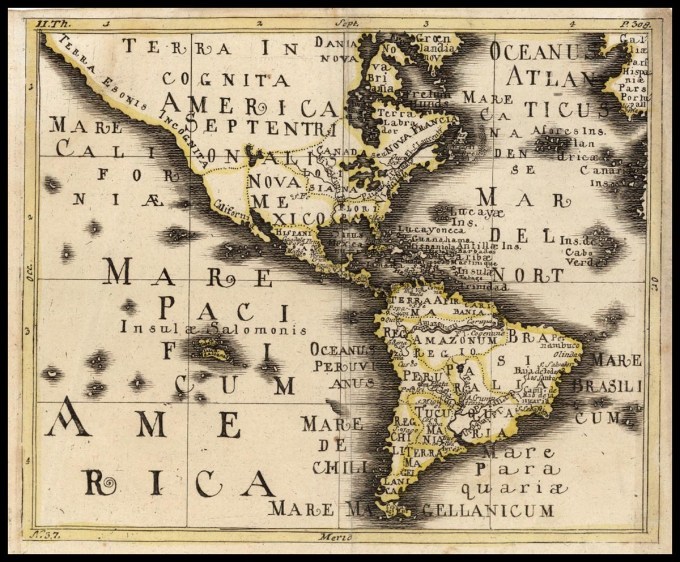 Latin America is emerging as the new battleground for the global tech giants, and some of Silicon Valley and Asia’s biggest investors—from Sequoia Capital to SoftBank—are taking notice. International investment in Latin American startups has more than doubled since 2013, with 25 new investors entering the region in 2017 alone, including SoftBank, Didi Chuxing and… Read More
Latin America is emerging as the new battleground for the global tech giants, and some of Silicon Valley and Asia’s biggest investors—from Sequoia Capital to SoftBank—are taking notice. International investment in Latin American startups has more than doubled since 2013, with 25 new investors entering the region in 2017 alone, including SoftBank, Didi Chuxing and… Read Morefrom TechCrunch http://ift.tt/2F0mNJe
New, new, new TechCrunch
 In the beginning, there was TechCrunch. Then there was new TechCrunch. And, if you’ve been reading TechCrunch for the last five years or so, you’re used to seeing new, new TechCrunch. Our last redesign, launched in 2013, was conceived when iOS was still Skeuomorphic and responsive web design was forward thinking. It’s served us well, but the internet never stands still and… Read More
In the beginning, there was TechCrunch. Then there was new TechCrunch. And, if you’ve been reading TechCrunch for the last five years or so, you’re used to seeing new, new TechCrunch. Our last redesign, launched in 2013, was conceived when iOS was still Skeuomorphic and responsive web design was forward thinking. It’s served us well, but the internet never stands still and… Read Morefrom TechCrunch http://ift.tt/2GLpLOn
Warrantless surveillance law proves it’s time to take privacy into our own hands
 The warrantless surveillance law gained attention in 2013 when Edward Snowden leaked that the NSA was using it to spy on Americans’ text messages, phone calls, emails and internet activity — all legally, and without warrants. That bill has been passed by the U.S. Senate for another six years and has been signed into law by President Trump. Naturally, this has caused quite the uproar. Read More
The warrantless surveillance law gained attention in 2013 when Edward Snowden leaked that the NSA was using it to spy on Americans’ text messages, phone calls, emails and internet activity — all legally, and without warrants. That bill has been passed by the U.S. Senate for another six years and has been signed into law by President Trump. Naturally, this has caused quite the uproar. Read Morefrom TechCrunch http://ift.tt/2EXSfbf
Square’s bets beyond a register brought in $253M last year as it posts a largely positive fourth quarter
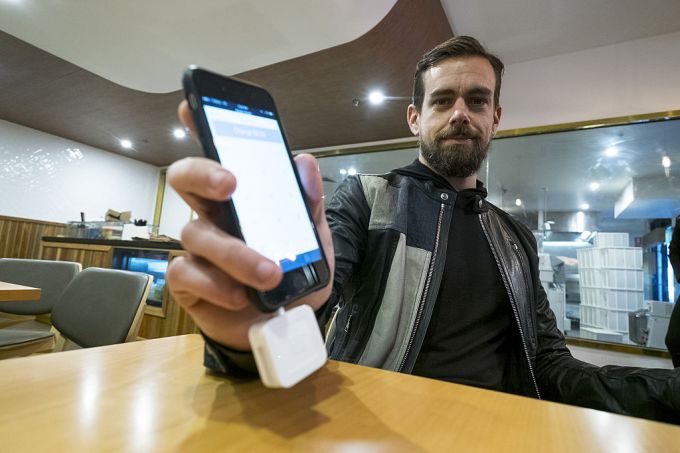 Square posted a largely successful fourth quarter that showed continuing growth with its Cash App — with users spending around $90 million on its Cash card in December, putting it on a potentially $1 billion run rate. That would offer another significant avenue for Square to snap up additional customers as it looks to chip away at the alternatives available for directly sending cash… Read More
Square posted a largely successful fourth quarter that showed continuing growth with its Cash App — with users spending around $90 million on its Cash card in December, putting it on a potentially $1 billion run rate. That would offer another significant avenue for Square to snap up additional customers as it looks to chip away at the alternatives available for directly sending cash… Read Morefrom TechCrunch http://ift.tt/2EXI2aJ
IBM Watson CTO Rob High on bias and other challenges in machine learning
 For IBM Watson CTO Rob High, the biggest technological challenge in machine learning right now is figuring out how to train models with less data. “It’s a challenge, it’s a goal and there’s certainly reason to believe that it’s possible,” High told me during an interview at the annual Mobile World Congress in Barcelona. Read More
For IBM Watson CTO Rob High, the biggest technological challenge in machine learning right now is figuring out how to train models with less data. “It’s a challenge, it’s a goal and there’s certainly reason to believe that it’s possible,” High told me during an interview at the annual Mobile World Congress in Barcelona. Read Morefrom TechCrunch http://ift.tt/2oD4zT9
Sonos One’s Alexa support comes to Canada
 Sonos One users in Canada can now join their peers south of the border in yelling requests at their connected speakers – a free update issued today enables Amazon Alexa on the Sonos One. The One launched with Alexa support in the U.S., but while the speaker has been available to Canadian buyers since late last year, Alexa voice commands are new with the update. That means Canadians will… Read More
Sonos One users in Canada can now join their peers south of the border in yelling requests at their connected speakers – a free update issued today enables Amazon Alexa on the Sonos One. The One launched with Alexa support in the U.S., but while the speaker has been available to Canadian buyers since late last year, Alexa voice commands are new with the update. That means Canadians will… Read Morefrom TechCrunch http://ift.tt/2CLm9ts
Amazon is buying smart doorbell maker Ring
 With Nest’s first smart video doorbell right around the corner, Amazon is busy buying up the competition. After acquiring Blink just two months ago, Amazon is now acquiring Ring, makers of the self-titled Ring doorbell (plus a bunch of other security gear, like solar security cameras, floodlight cams and an in-home alarm system). Read More
With Nest’s first smart video doorbell right around the corner, Amazon is busy buying up the competition. After acquiring Blink just two months ago, Amazon is now acquiring Ring, makers of the self-titled Ring doorbell (plus a bunch of other security gear, like solar security cameras, floodlight cams and an in-home alarm system). Read Morefrom TechCrunch http://ift.tt/2FboGlS
Apple adds an M. Night Shyamalan thriller to its roster of original shows
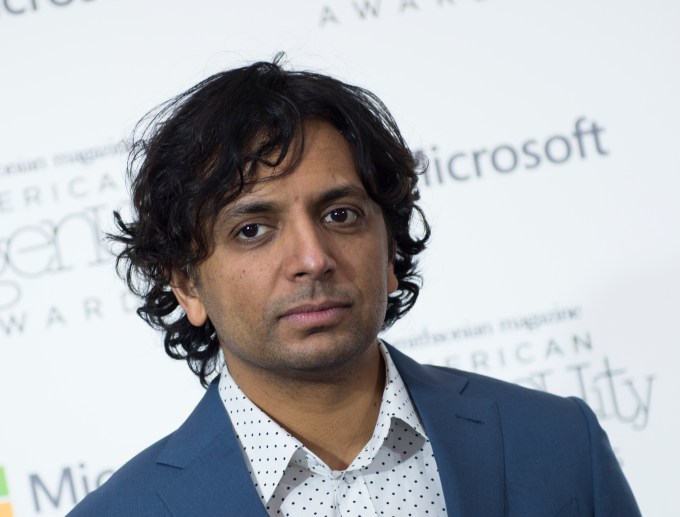 Apple will apparently have every kind of show from anyone with any kind of name working in Hollywood when it launches its updated approach to original video content: The latest original on its slate is a 10-episode, half-hour thriller series order that will be executive produced by M. Night Shyamalan, who is also going to direct the first installment (via Variety). The thriller is being written… Read More
Apple will apparently have every kind of show from anyone with any kind of name working in Hollywood when it launches its updated approach to original video content: The latest original on its slate is a 10-episode, half-hour thriller series order that will be executive produced by M. Night Shyamalan, who is also going to direct the first installment (via Variety). The thriller is being written… Read Morefrom TechCrunch http://ift.tt/2oySVbY
Senator Markey officially introduces legislation to reestablish net neutrality
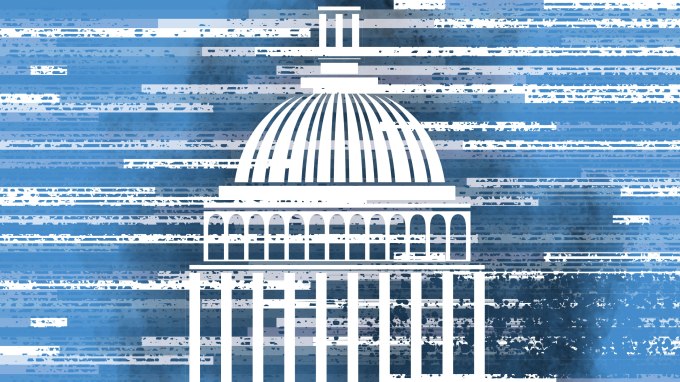 Senator Ed Markey (D-MA) has introduced legislation to reverse the FCC’s recently published order and reestablish 2015’s net neutrality rules. Although the bill has little chance of reaching the president’s desk, let alone being signed into law, it’s an important step in the long-term battle over how the internet is to be regulated. Read More
Senator Ed Markey (D-MA) has introduced legislation to reverse the FCC’s recently published order and reestablish 2015’s net neutrality rules. Although the bill has little chance of reaching the president’s desk, let alone being signed into law, it’s an important step in the long-term battle over how the internet is to be regulated. Read Morefrom TechCrunch http://ift.tt/2CMj9Nv
These will be the first cities getting 5G from Sprint and T-Mobile
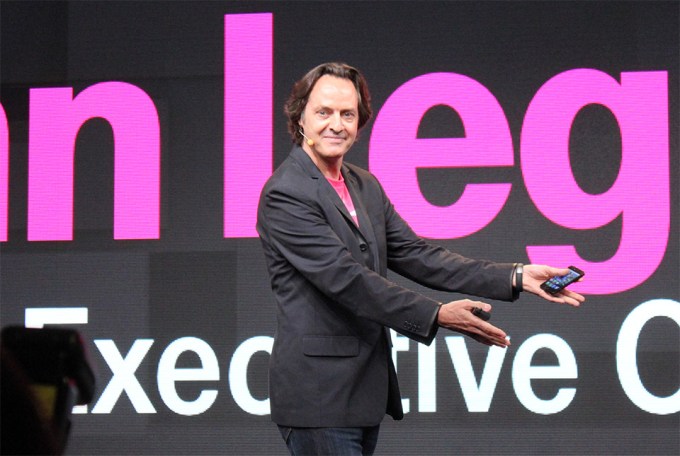 Just last week, AT&T announced the first handful of cities where it’ll roll out its 5G network later this year. Today at Mobile World Congress, T-Mobile and Sprint did the same. Sprint’s first 5G networks will go live in Chicago, Los Angeles, Dallas, Atlanta, Washington, DC and Houston. T-Mobile will fire up 5G in New York, Los Angeles, Las Vegas and Dallas first. Read More
Just last week, AT&T announced the first handful of cities where it’ll roll out its 5G network later this year. Today at Mobile World Congress, T-Mobile and Sprint did the same. Sprint’s first 5G networks will go live in Chicago, Los Angeles, Dallas, Atlanta, Washington, DC and Houston. T-Mobile will fire up 5G in New York, Los Angeles, Las Vegas and Dallas first. Read Morefrom TechCrunch http://ift.tt/2HQo2Zr
Uber’s SVP of leadership is leaving her day-to-day role
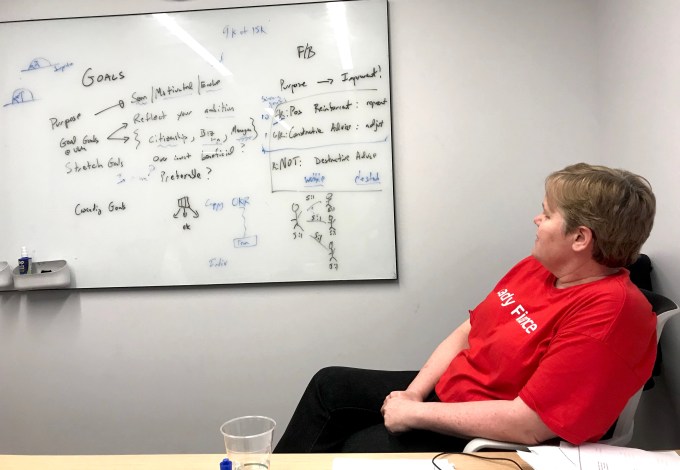 Frances Frei, who joined Uber last June as the company’s first-ever SVP of leadership and strategy, is leaving the company, Recode first reported. Frei’s plan is to remain as an advisor at Uber while moving on to create a new leadership development program for people of color and women at other companies. Read More
Frances Frei, who joined Uber last June as the company’s first-ever SVP of leadership and strategy, is leaving the company, Recode first reported. Frei’s plan is to remain as an advisor at Uber while moving on to create a new leadership development program for people of color and women at other companies. Read Morefrom TechCrunch http://ift.tt/2EXRxLd
Netflix to have around 700 original movies and shows available in 2018
 Netflix’s original content ramp is showing no signs of slowing own – in fact, if anything, it’s speeding up. Netflix CFO David Wells says that the streaming company wants to have somewhere around 700 original shows and movies on the service in 2018, using that previously revealed budget of around $8 billion earmarked for original content. Wells, speaking at Morgan… Read More
Netflix’s original content ramp is showing no signs of slowing own – in fact, if anything, it’s speeding up. Netflix CFO David Wells says that the streaming company wants to have somewhere around 700 original shows and movies on the service in 2018, using that previously revealed budget of around $8 billion earmarked for original content. Wells, speaking at Morgan… Read Morefrom TechCrunch http://ift.tt/2CM5gPl
Chinese smartphone maker Doogee shows off its vision for the smartphone camera
 Doogee’s Mobile World Congress press conference is mostly what you’d expect from a company you’ve never heard of: small, low key, in the second basement meeting room at a hotel across from the convention center. It’s a bit like the smartphone farm system, the company’s hoping it can gin up enough awareness to rise above the din of news from the world’s… Read More
Doogee’s Mobile World Congress press conference is mostly what you’d expect from a company you’ve never heard of: small, low key, in the second basement meeting room at a hotel across from the convention center. It’s a bit like the smartphone farm system, the company’s hoping it can gin up enough awareness to rise above the din of news from the world’s… Read Morefrom TechCrunch http://ift.tt/2FA9HzC
BMW says in-car digital assistants have to go beyond being ‘Echo Dots in a cup holder’
 BMW wants to bring personal assistants to the car, but it doesn’t want to build its own. Instead, it wants to work with Amazon, Google, Microsoft and others to bring the best features of their platforms to its cars. “We don’t want Alexa to drive our car. That’s not a good fit,” Dieter May, BMW’s senior VP for digital products and services, told me during… Read More
BMW wants to bring personal assistants to the car, but it doesn’t want to build its own. Instead, it wants to work with Amazon, Google, Microsoft and others to bring the best features of their platforms to its cars. “We don’t want Alexa to drive our car. That’s not a good fit,” Dieter May, BMW’s senior VP for digital products and services, told me during… Read Morefrom TechCrunch http://ift.tt/2EZPGFG
Facebook launches a local news accelerator for publishers
 Facebook is trying to play extra nice with local news publishers by putting $3 million behind the launch of the Local News Subscriptions Accelerator. The three-month pilot program will help 10 to 15 U.S.-based metropolitan news organizations gain more digital subscribers both on and off Facebook. Read More
Facebook is trying to play extra nice with local news publishers by putting $3 million behind the launch of the Local News Subscriptions Accelerator. The three-month pilot program will help 10 to 15 U.S.-based metropolitan news organizations gain more digital subscribers both on and off Facebook. Read Morefrom TechCrunch http://ift.tt/2CMhxmw
The FTC settles with Venmo over a series of privacy and security violations
 The FTC announced today it has settled with PayPal over a complaint about the company’s handling of privacy disclosures in its peer-to-peer payments app Venmo, its lack of disclosure over the speed with which customers could access funds, as well as other issues related to the security and privacy of customer transactions. News that the Federal Trade Commission was looking into… Read More
The FTC announced today it has settled with PayPal over a complaint about the company’s handling of privacy disclosures in its peer-to-peer payments app Venmo, its lack of disclosure over the speed with which customers could access funds, as well as other issues related to the security and privacy of customer transactions. News that the Federal Trade Commission was looking into… Read Morefrom TechCrunch http://ift.tt/2FzpgHG
BrainQ aims to cure stroke and spinal cord injuries through mind-reader tech
 Israel-based BrainQ is a new neurotech startup hoping to take on brain-computer interface (BCI) companies Kernel and Neuralink. But it’s early days in this industry, including for BrainQ, which plans to use a non-surgically embedded EEG machine to gather data and help improve outcomes for stroke and spinal cord patients. Read More
Israel-based BrainQ is a new neurotech startup hoping to take on brain-computer interface (BCI) companies Kernel and Neuralink. But it’s early days in this industry, including for BrainQ, which plans to use a non-surgically embedded EEG machine to gather data and help improve outcomes for stroke and spinal cord patients. Read Morefrom TechCrunch http://ift.tt/2GOPENm
Robo-logistics company Magazino raises $25M for its warehouse bots
 German robotics firm Magazino, creator of robots meant to work alongside people in warehouses and the like, has raised $24.8 million to continue development and deployment of its TORU and SOTO robots. Read More
German robotics firm Magazino, creator of robots meant to work alongside people in warehouses and the like, has raised $24.8 million to continue development and deployment of its TORU and SOTO robots. Read Morefrom TechCrunch http://ift.tt/2ouCGNV
Afghanistan's Ghani offers talks with Taliban 'without preconditions'
from Reuters: World News http://ift.tt/2sXfwUY
China's military flexes muscles for domestic objective: more funding
from Reuters: World News http://ift.tt/2BXTLrk
Saudi crown prince says corruption purge supports budget: Washington Post
from Reuters: World News http://ift.tt/2BXd2Jt
Jerusalem's Church of Holy Sepulchre reopens after protest
from Reuters: World News http://ift.tt/2FBA7kn
Canada gravely concerned by Myanmar's jailing of journalists
from Reuters: World News http://ift.tt/2oucd2Z
Russian truce plan fails to halt bombing of Syria's Ghouta
from Reuters: World News http://ift.tt/2F9wVi4
Trump discusses Iran in calls with Saudi, UAE leaders: White House
from Reuters: World News http://ift.tt/2EWisXE
U.S.-Russian crew returns from space station: NASA TV
from Reuters: World News http://ift.tt/2BVJKe3
Papua New Guinea officials say whole villages flattened by deadly quake
from Reuters: World News http://ift.tt/2F0C3Gg
Indian police probing graft case arrest son of former finance minister Chidambaram
from Reuters: World News http://ift.tt/2t5jWsW
Toys R Us and Maplin face collapse with 5,500 jobs at risk
from BBC News - Business http://ift.tt/2F0GkoS
Levi Strauss to use lasers instead of people to finish jeans
from BBC News - Business http://ift.tt/2HMVyQp
Foxtons hit as London housing market ebbs
from BBC News - Business http://ift.tt/2ovJj2v
Cannes property show accused of sleaze and sexism
from BBC News - Business http://ift.tt/2GL6soc
iQiyi: 'China's Netflix' to list on US stock market
from BBC News - Business http://ift.tt/2BWdxn1
Amazon buys 'smart' doorbell firm Ring
from BBC News - Business http://ift.tt/2CNYfxf
Disney plans €2bn expansion at Disneyland Paris
from BBC News - Business http://ift.tt/2HS3nV0
Takata airbag scandal: Australia recalls 2.3 million cars
from BBC News - Business http://ift.tt/2GQxydP
Trump reaches informal Air Force One deal with Boeing
from BBC News - Business http://ift.tt/2BVJw6T
Diesel ban approved for German cities to cut pollution
from BBC News - Business http://ift.tt/2EZjGgX
Rupert Murdoch's Sky bid challenged by Comcast
from BBC News - Business http://ift.tt/2F9IMwQ
Doorstep lender to return £169m to customers
from BBC News - Business http://ift.tt/2ETv6GM
Ryanair to axe Glasgow Airport base
from BBC News - Business http://ift.tt/2GMxQ5k
Credit card debt: Deadline set for new rules
from BBC News - Business http://ift.tt/2EWkl2p
The app that helps feeds kids
from BBC News - Business http://ift.tt/2GOZ8bm
Moon to get 4G mobile network
from BBC News - Business http://ift.tt/2otVPzp
Huawei: US scared we are too competitive
from BBC News - Business http://ift.tt/2ovKC1m
The end of asking for the bill
from BBC News - Business http://ift.tt/2BSjFfR
If Nafta trade deal was a hamburger...
from BBC News - Business http://ift.tt/2GIrZOk
'Chocolate showcases our local producers'
from BBC News - Business http://ift.tt/2BRq8Yw
Are you sorry to see the end of the old-style £10 note?
from BBC News - Business http://ift.tt/2EWdm9G
MWC 2018: Smartphone giants head to Barcelona
from BBC News - Business http://ift.tt/2sXQXHx
Starbucks in 'latte levy' London trial on disposable cups
from BBC News - Business http://ift.tt/2GNR6zh
Tesco 'extremely sorry' for Black Panther costume mistake
from BBC News - Business http://ift.tt/2t1yGtc
Drink up
from BBC News - Business http://ift.tt/2CqiXHO
Chord change
from BBC News - Business http://ift.tt/2ETbR05
Waiting game
from BBC News - Business http://ift.tt/2FB3pjp
Very stylish
from BBC News - Business http://ift.tt/2EU0BN8
The Slippery Search for Creativity
THE REPORTERS WHO covered the Beatles’s first press conference in the United States, at JFK Airport on February 7, 1964, had never encountered anything remotely similar — and it showed. They asked the band a string of inane questions — about the accents, the hair, the money. Eventually someone asked what their secret was: what did these four lads have that made teenagers around the world scream at the mere sight of them, and spin their records until the needles were worn to a nub? Paul answered honestly: “We don’t know, really.” John cheekily chimed in: “If we knew, we’d form another group and be managers.”
We can forgive the Beatles for not being able to explain the Beatles — after all, creative types of all kinds have struggled to explain the creative process, and scientists haven’t had much more luck. Even the vocabulary we use is fraught: creativity, insight, talent, genius — these are ill-defined words with overlapping meanings. And yet, we somehow know it when we see it. We admire creativity, of course; but we also want to dissect it, to understand it. Can it be captured in a formula? Is there some magical combination of nature and nurture that produces the Fifth Symphony, or The Last Supper, or the theory of relativity?
Perhaps neuroscience can help. The Runaway Species: How Human Creativity Remakes the World is co-authored by Stanford neuroscientist David Eagleman — you may have seen him on TV, hosting PBS’s The Brain series — and Anthony Brandt, a composer and music professor at Rice University. While they don’t offer a magic formula, Brandt and Eagleman postulate three facets of creativity that might help us understand the nature of creative insight. The first is “bending” — taking existing ideas and materials and bending them into something new. A ballet dancer does this when she literally bends her body into a shape never seen before (the authors cite the late Martha Graham as an example), but so too does an artist when he paints something a little different from what he actually sees (like Claude Monet’s multiple, shimmering takes on Rouen Cathedral). The second is “breaking” — dividing something into its component parts, rearranging them, and throwing away parts if necessary. The invention of digital photography and digital sound recording are two examples — neither would be possible without the recognition that even the most seemingly continuous stimuli can be broken down into discrete “bits” of information. The authors describe the development of the MP3 — a digital audio format in which sounds are further compressed; only the most vital information is preserved (a JPEG does something similar with a photograph). Picasso, one might argue, did something analogous in his cubist portraits, keeping key elements of, say, a face — eyes, nose, mouth — but rearranging them in novel (even shocking) ways. Old rules of portraiture were discarded. The third facet is “blending” — taking two or more good ideas and combining them into an even better idea. An example from our ancient past is the fusing of copper and tin to form bronze — a material much stronger than either ingredient on its own. The blending can be mental rather than physical: novelists and filmmakers blend locations and time periods, and scientists might borrow ideas from one area of research for use in another.
The authors aim to persuade not so much by force of argument as sheer volume of representative cases. We’re confronted with a parade of examples — so many that it’s all a bit dizzying, though the many color images are a help. New topics are introduced and dispatched in no more than a couple of paragraphs. There are, as one might expect, tips for nurturing creativity in the workplace and in the classroom. These seem quite sound, if rather unsurprising — a section in the chapter on creative schooling is titled “Encourage Creative Risk-taking.”
The picture that emerges is one of perpetual tension between the familiar and the novel: if something is too familiar, it’s boring; too unfamiliar, and we dismiss it as crazy or even dangerous. The Beatles, one might argue, found the perfect middle ground — familiar enough to want to sing and dance along; dangerous enough to rattle parents. We also find that the new builds on the old; creativity, after all, doesn’t arise in a vacuum. One might point to Shakespeare: a rudimentary version of Hamlet had existed for centuries as a Scandinavian folk tale, but add a sarcastic gravedigger and a pair of buffoonish courtiers, and you have a play for the ages. And neither Mozart nor Beethoven reinvented the orchestra — they just found new ways to make use of it.
Mind you, not every great idea takes hold; as Brandt and Eagleman remind us, an idea that’s too far “ahead of its time” may simply disappear into the fog of history. Occasionally, with luck, it’s rediscovered. They give the example of Alfred Wegener’s theory of continental drift, first put forward in 1912. It was met with ridicule. A few decades later (sadly, after Wegener’s death) it was accepted as a cornerstone of geological science. Sometimes there are sound reasons for a new idea to be met with skepticism; sometimes it boils down to prejudice, or worse. Some German physicists dismissed Einstein’s theory of relativity as “Jewish science.”
There are a few hiccups along the way. For example, in describing an improvement to Japan’s famous “bullet train,” the authors say that engineer Eiji Nakatsu struggled to make the train quieter: “[T]he flat prow of its locomotive would create ear-shattering noise when moving at high speeds.” Nakatsu, fortunately, was an avid birdwatcher, and solved the problem by modeling the train’s “nose” on the beak of a kingfisher. The authors say that this happened in the 1990s — but Japan has had high-speed rail service on its Tokyo-Osaka corridor since 1964, and those trains were already pretty streamlined; as well, airplanes — and for that matter, bullets — had pretty sharp noses by the ’90s. So it’s not quite clear why a bird was needed for the great moment of insight.
And there’s a small problem with the authors’ treatment of the invention of the marine chronometer back in the 18th century. It was John Harrison, a self-taught clockmaker from Yorkshire, who eventually found a workable design (here the authors cite Dava Sobel’s wonderful book, Longitude). After building a succession of ingenious but bulky clocks (dubbed H-1 through H-3), Harrison finally settled on a much smaller design, known as H-4, which did the trick. The authors write that Harrison’s breakthrough was “to get rid of the pendulum entirely” — but it was already well known that no shipboard clock could use a pendulum; all of Harrison’s timepieces employed a balance wheel and spring (a late 17th-century innovation) rather than a pendulum to regulate the turning of the gears.
Here’s an odder thing: in telling how we gradually adapt to change over time, they write,
When we learn to drive a car, we begin with the small steps: checking the rearview and sideview mirrors, signaling when changing lanes, attending to the traffic around us, watching the speedometer. Later, we can drive with a piping hot coffee in one hand, talking to our spouse and kids, with the radio on and our cellphone ringing, all while speeding along at sixty miles per hour.
I humbly suggest that while we perhaps can do this, we shouldn’t.
A larger issue is the way the authors lump seemingly disparate types of creativity and invention together. They say, for example, that “the final, conclusive mobile phone will never be developed, nor the perfect television show whose appeal doesn’t fade, nor the perfect umbrella, bicycle or pair of shoes.” But isn’t our wish for innovation wildly different in each case? New mobile phone designs seem to appear almost monthly, because there’s money to be made, and more features can always be crammed into them. In contrast, umbrellas, by my estimation, have evolved only imperceptibly in the last 40 years (if it keeps us dry, we’re happy); and while shoe designs reflect changing fashions, their essential properties don’t change much. Bicycles, though a bit more technology-laden, seem to fall in that category as well. TV shows seem quite different. We want each episode to bring something new, and yet to stick within an established framework, but even if a show is successful (The Simpsons is in its 29th year) it surely has a limited lifespan in a way that the umbrella and the shoe do not. A further complication, which the book only briefly addresses, is the question of whether creativity can be objectively measured, or if it is, at least to some extent, a label we bestow on things after-the-fact: a kind of social construct. (Some evidence for the latter view can be found in the way our verdicts evolve over time. There’s a long list of novelties that were initially met with derision, only to be recognized as iconic some years or decades later — think the Eiffel Tower, the Sydney Opera House, The Rite of Spring, and AC/DC’s Back in Black.)
Elkhonon Goldberg’s Creativity: The Human Brain in the Age of Innovation is a markedly different affair. For starters, Goldberg, a neuropsychologist at NYU, goes into much more detail about the actual workings of the human brain. While the ever-confident Brandt and Eagleman keep things moving along like a briskly paced PowerPoint presentation, Goldberg adopts a more scholarly tone; he’s more cautious, more willing to admit that sweeping conclusions may not be warranted. On the issue of whether we can truly nurture creativity, for example, he writes,
[There] will not be a binary “yes or no.” The answer — or rather answers — will have to be more nuanced, taking into account many types of creative accomplishments, their many degrees, and many kinds of creative minds. We will also need better ways of defining and measuring creativity in numerous arenas of human endeavors.
Such caution prevails throughout.
Indeed, the two books are framed quite differently: Brandt and Eagleman believe that humans are driving change, while Goldberg takes it as a given that the world is changing, and that we need to embrace creativity and novelty in order to adapt to it. While Brandt and Eagleman stress the uniqueness of our species, Goldberg explains that at least some nonhuman primates respond to familiarity and novelty in the same way that we do (at least, their brains respond in a similar fashion). And the authors differ starkly on the possibility of computers being creative. Brandt and Eagleman say that “[w]hatever you put in is exactly what you get back out” — but as Goldberg points out, computer algorithms have created art and music “judged by humans as being different and valuable.” Besides, are we humans not in some sense “programmed”? “Since even the most unorthodox creative individual is a product of his time and a beneficiary of the previously accumulated knowledge, insight and tradition,” Goldberg writes, “any creative product generated by that individual, no matter how brilliant, is also in a broad sense derivative.”
As with Brandt and Eagleman’s book, there are a few problems. While Goldberg is clearly in favor of gender equality, his language may trouble some readers. He suggests that the contributions of men and women to creative endeavors “can be addressed constructively and rationally, without hysteria, defensiveness, or the corrosive effects of ‘political correctness.’” A lesser concern is repetition; by my count, we’re introduced to Goldberg’s two dogs — a now-deceased Bullmastiff named Brit, and an English Mastiff puppy, Brutus — at least three times. And the neuroscience is occasionally so dense as to be off-putting, as in: “modulation of the dopaminergic but not noradrenergic systems facilitate performance on lexical tasks which are based on more automatic processing and require the use of well-established semantic relationships.”
Creativity is a fascinating subject, and the human brain — that three-pound lump of exquisitely connected gray matter — is the organ that makes it happen. If you could combine the best of these two books, you’d have an entertaining and scientifically rigorous exploration of that subject.
¤
The post The Slippery Search for Creativity appeared first on Los Angeles Review of Books.
from Los Angeles Review of Books http://ift.tt/2oBTEsV
A Dialogue on First Books, in Two Parts
PART I: Diana Arterian Interviews Andrew Wessels
Andrew Wessels’s book traces a day’s walk through Istanbul, placing itself in dialogue with the flâneur figure in W. G. Sebald’s The Rings of Saturn. Yet A Turkish Dictionary also regards the profound impact a nation’s leader can have on language, historical record, and artifacts. It can be chilling to read, considering the tack many current world leaders are taking, the echoes of the past into the present. The collection is a thoughtful investigation of these concerns in conjunction with the self, curiosity, documentation, religiosity. So few poets can hold all these subjects in a single volume with such poise. Andrew and I only began to know one another after meeting randomly and agreeing to exchange our first manuscripts, and, even while reading an early draft, I was thrilled by the engines of the book, its lineage — and where it might lead. It reminded me of Barthes: “Is not the most erotic portion of a body where the garment gapes? […] it is this flash itself which seduces, or rather: the staging of an appearance-as-disappearance.” What the body of A Turkish Dictionary reveals is a complex act of guiding that Wessels accomplishes with apparent ease.
¤
DIANA ARTERIAN: Andrew, I’m so thrilled to have the opportunity to speak with you about A Turkish Dictionary. I saw an earlier iteration of it years ago, and it matured to an even richer text than the one I had originally encountered.
Last year you were living in Turkey at a time when the pendulum, which once swung hard in the direction of Westernization (via Atatürk), was pushed toward extreme nationalism (via Erdoğan), forcing you out of the country. Though books are often written far ahead of publication (and I know ATD was, too), there is a puncture of the present moment in a footnote regarding a suicide bomber attacking a place you wrote about in the book. Erdoğan’s increasingly despotic acts in conjunction with the publication of ATD made you decide to leave in order preserve your safety, which seemed beyond unlikely years before. When you were writing the book did it feel like you were documenting this transition?
ANDREW WESSELS: The book was written before the current upheaval in Turkey (failed coup attempt, terrorist attacks, government’s hard move toward authoritarianism). That moment of the suicide bomber came after the book was finished but during the final editing and production process, so the present was continuously pushing into the book. Istanbul is, if anything, proof of constant change and the impossibility of true stasis. So the current changes are a continuation of that reality. I’ve noticed how some lines in the book mean new things now: “Oh Atatürk, where did they put your words” initially was written to interact with the Turkish language reforms. But now, with Erdoğan’s rise toward dictatorial powers, the curtailing of secular institutions, and the general move away from Atatürk’s Kemalist policy, that line has taken on a different significance. Everything changes, including the meaning of the words in this book.
This feels ironically apt considering the book is, in fact, a sort of dictionary, shining a light on Atatürk’s decision regarding the Turkish language’s speedy metamorphosis.
The Turkish language reform was two primary things. First, Atatürk transitioned the Turkish language from Arabic script to Latin script. Second, as part of creating a Turkish nationalistic identity, the Ottoman Turkish language was purged of any words that had been borrowed over the course of previous centuries. The idea was to create a “pure” Turkish language written in Latin script. So, virtually overnight, a huge chunk of the language suddenly ceased to exist, at least officially. New words had to be created on the spot to replace words that had ceased to exist.
What I was interested in with the opening section “&language” is seeing what happens when words are used in different ways. What happens when this word is placed next to this word? What happens when this word is removed or erased? I wanted to explore that process in real time, and, as I mentioned before, what I’ve learned is that these words have continued to change meaning as the world changes rapidly.
ATD circles predominantly around a kind of awe and terror in the face of such absolute power, and how that power influences historical legacy and knowledge. There is the power of extreme linguistic modification that Atatürk enacted, or Erdoğan demanding the destruction of a recently erected statue meant to signify peace between Turkey and Armenia. In the face of this, you state, “I must accept the rate at which information degrades as time carries it forward, away from its source.” This can be read as flippant considering the circumstances, no?
I thought a lot about power as I wrote this, and specifically about the power to tell the stories of the past. Standing in Sultanahmet Square, one can see the Hagia Sophia, the Blue Mosque, and the remnants of the Hippodrome. It’s a space that has been fought over for thousands of years. To stand there is to stand where countless wars and deaths have occurred and, as the recent suicide bombing shows, continue to occur. I began to be interested in what names remained and what names were erased. Constantine and Justinian and Enrico Dandolo and Fatih and Atatürk and Erdoğan: These are the leaders whose names remain inscribed over and over and over again, and thus the names that are the hardest to erase. But to stand there is to recognize that there were countless people who were beneath these leaders, sent to their deaths. If we look for them, we won’t see their names, but the tracings of their ghosts might still remain.
In ATD you see how those who had power made quick work of altering that space in order to hew a particular narrative that served the vision of what they wanted for Turkey. Thus in your book you document the physical palimpsest of a city that Istanbul is, once being Byzantium and then Constantinople, while also a prodding at what is visible, dormant, or invisible. The images are so evocative, as with the Christian mosaics covered in plaster by the Ottomans, which archeologists are now carefully uncovering. I found your investigation destabilizes trust in the visible and the powerful in the face of curated cultural or historical spaces.
Again, there is really no stasis. The Hagia Sophia (which is actually the third Hagia Sophia built on that site) was a great cathedral. Then, upon first conquering the city, Fatih rode in on his horse and consecrated the space as a mosque, eventually adding minarets to the building, covering the interior designs in plaster, and adjusting the prayer space to face Mecca. After the formation of the Turkish Republic, it became a museum space designed to show this split history. Most recently, Erdoğan’s government has allowed for the call to prayer to emanate from the minarets for the first time (other than very special occasions) in nearly a century. Buildings and cities are nexus points or sites for change, and thus are places for power to exert themselves and to display their exertion.
In the United States, we see that on a grand and totalizing scale with the nearly total destruction of Native American histories and archaeologies at least outside of museum exhibits. A function of power is to control what we see. By not seeing these Native American histories, we are freed from realizing our history of genocide and destruction. We can be absolved of (or at least forget that we need to impose upon ourselves) guilt. We can rationalize our actions.
While I hadn’t considered this topic as one so clearly connected to your book until now, I would be remiss if I didn’t bring up the violence in our own country in response to the removal of statues and markers of our past violence and bloody history, particularly in the South. The poet Robin Coste Lewis recently stated that the Confederate statues need to be put in a museum so we don’t forget. I was so grateful for that insight as the removal of the statues terrified me nearly as much as the white supremacists’ responses to their removal. Pulling these statues down blots out not only the physical markers of the Civil War and slavery here in the United States, but, more important, the desire to commemorate those brutal practices — and the vocal portion of the white American population’s enduring interest in saluting what they represent.
I think this is a great and important connection to make. In The Patria, one of the oldest histories of Constantinople written in approximately the ninth century, there is a famous section on statues that outlines a walking tour of the city. It was designed to guide a tourist through the Greek and Roman sculptures that had been brought to Constantinople by the various rulers, statues that were quite strange and unknowable to the now-Christian populace. Within a few centuries of the initial writing of this text, virtually all of these monuments had been lost or destroyed, and as the city has continued to change, it is impossible to accurately describe on a map what the walking tour itself was.
Keeping problematic monuments up is obviously wrong to hold up violent, oftentimes evil values or histories. Destroying them creates an erasure that can paper over the past and absolve without restitution. But institutionalizing them creates its own problems. A museum can contextualize, but a museum can also contextualize in equally problematic ways depending on who is doing the curating. By taking monuments in and presenting them as critique, these institutions also coalesce greater power themselves. There is also the ethics of acquirement as moving cultural capital from one location to another, such as the Pergamon Altar in Berlin or the Elgin Marbles in London. It is hard to find a good, firm answer because we’re talking about the most inhumane things that humans can possibly do to each other.
The thing I find most strange is the belief that a monument is static in some way. That a statue that we know was erected 85 years ago didn’t exist before then. That we believe, despite all evidence to the contrary, that it will remain. That the monument is anything more than an expression of power and belief at a single point in time, and thus a site for us to reevaluate power and belief now. These representations, whether in Istanbul or in the United States, are sites of power struggles and determinations of who gets to say how we see and represent ourselves right now.
Absolutely — and I believe we discussed Thessaloniki, Greece, (Atatürk’s birthplace) months ago when I traveled there and saw physical palimpsests and traces of struggle between Greece, the Roman Empire, and the Ottoman Empire. There was an ancient cathedral in particular with the last standing minaret from the Ottoman period in its courtyard. Above the cathedral’s entryway is Arabic script from when it functioned as a mosque, as well as a more modern painting of Saint George just above that text. In the spirit of ATD, I’ll include the photo I snapped of that doorway.

Having these physical remnants feels so urgent to learning what took place throughout the world (if the remnants survive conflict, governments, and/or erosion). As a traveling outsider, it is an entry point to a more comprehensive understanding of a place. How did you decide to engage with the city of Istanbul this way through your writing? Though you have substantive connections to Turkey, did it ever give you pause to write about the country and its capital, especially concerning the long and checkered history of an Anglo male body moving through an “exotic” space and attempting to document it?
This has been a deep concern of mine and a line of interrogation as I wrote the book, and as I traveled in and lived in Istanbul and Turkey over the years. The short and personal answer is that this book is, in large part, about my faith and conversion. I’m a straight, white man, and I am also a Muslim man, and at least for me writing this book was part of my coming into my faith. Istanbul is where and how that happened. Additionally, writing this book was about me building a dual-cultural life with my partner Zeliha, who is Turkish. It is a space that is not my home but that has become my home.
The history of Istanbul at least in the Western imaginary is primarily seen through the lens of Western travelers. For a variety of reasons, very few Ottoman-era writers are translated, and while there have been more modern Turkish writers translated, they still are largely ignored outside of a certain subset of readers. So I sought to engage these histories and these elisions and the ongoing transformation of the city alongside my own personal transformations. I wrote a little bit more about this larger question for LARB in response to Suzy Hansen’s recent book on Turkey and American imperialism.
One concept you’ve brought up a couple of times that I haven’t engaged with yet directly is the idea of the palimpsest. The city is always recognizable as itself and yet is always changing. As I converted, my body felt similarly. Some physical aspect (discounting the fact that our cells themselves are constantly regenerating us anew) stayed the same, while something else — my perspective, my belief system — was revealed to me as similarly fluid and negotiable. I was simultaneously the same and different. And as I explored this in my walk and in compiling the final book, this palimpsest arose again and again, in the word, in the image, in history, in faith itself.
¤
Part II. Andrew Wessels Interviews Diana Arterian
The most direct thing I can say about Diana Arterian’s writing is that the more time I spend with her work, the more engaged, challenged, and enlightened I am by it. Playing Monster :: Seiche is a blistering and important work of poetry, a book whose impact far exceeds the boundaries of a typical debut collection. As I write this introduction and return again to this book, I find myself unable to stop myself from reading it again in full. So often, we talk of how much we like and enjoy a book. Arterian’s work demands that weightier conversation as each page investigates the fallout of our personal histories and traumas, the possibilities and boundaries of confession, and the ways that we can create, heal, and recreate ourselves through writing and reading.
¤
ANDREW WESSELS: I read Playing Monster :: Seiche first in manuscript form, and when you see a book designed and published, something happens to it. I think this overall design changes the book in really wonderful ways.
DIANA ARTERIAN: Indeed the work, once designed and printed, is a totally different animal. I have to give credit where it is due, and you’ve given me the opportunity: Joseph Kaplan designed the book, making it totally gorgeous and modern while simultaneously giving it the necessary markers to relay a complicated form. It moves between two (or, really, three) different threads, and I had a lot of anxiety leading up to Joseph’s work on how exactly this would manifest itself.
It really is gorgeous, and the design helps a reader navigate the various threads and complexities naturally. I want to start our conversation talking about the subtitle of your collection: Seiche. Would you explain what a “seiche” is and how that concept relates to your collection?
Your question points to the complicated nature of the form of this book, actually — “Seiche” is a second title, rather than a subtitle (initially these were two books with those two titles). “Seiche” is a standing wave that moves across a body of water without ever breaking. This doesn’t necessarily happen on its surface, but also can occur in its depths. Oftentimes a seiche is precipitated by a traumatic event, such as an earthquake.
As I read, I couldn’t help but apply the concept of the seiche to everything, from the overarching narrative threads weaving through the book to the interplay between words. I’d like to investigate some of these a bit deeper, if you don’t mind. First, can you talk about how the seiche relates to some of the main narratives: the binary of the father and mother, the relationship between the speaker and her family/history, the saga of the mother?
I gravitated toward the seiche image predominantly because it so perfectly encapsulates a feeling of dread. Or an image of simultaneous stasis and movement. In the “Playing Monster” pieces, you’re seeing the impact of an abusive sociopath on a family from the perspective of his child (myself). This damage is rarely enacted through instances of rupture, but rather through the cultivation of extreme psychological terror between those moments.
In the narrative ascribed to the “Seiche” thread, my mother is years beyond extracting her children and herself from that life, yet finding herself terrorized by several people, predominantly a stalker. I also included the abuse sustained by the woman who helped care for us as children — the prevalence of danger to us, her, and so many other (often) women and children, felt important.
This book is acting simultaneously as a witnessing of these events and as a confessional. Your collection intersects with various approaches to the confessional that make me think of how Alice Notley incorporates the real, the remembered, the abstracted, the surrealed, the felt, the sensed, the predicted, and the propheted, all within the confessional. Can you talk more about how you’ve approached the confessional?
When I started writing “Playing Monster,” which came before the “Seiche” poems, I wasn’t really thinking all that much about what I was doing. It was during the final year of my MFA and I needed to write a collection for my thesis — I wasn’t thinking about how these poems were possible in large part to many poets who laid the groundwork for exposure of the personal on the page and the feeling that nothing is sacred. This was a thoroughly naïve act in many ways, not simply for its lack of regard for literary history. I became aware of this naïveté through the emotional responses to the completed thesis from those close to me, which gave me serious pause. I had many friends write me and provide a list of page numbers that caused them to break down into tears. In addition, my mother, with my permission, began sending the manuscript to friends. These friends would often write back with similar reactions (which she then forwarded back to me). I didn’t much know what to make of this strange circuit of sadness, and it provoked a deep anxiety regarding the production of such material in the world that often seems defined by suffering. It felt, for the most part, like a spreading of pain or an attempt at emptying my own pain into the reader, which was not my intention. After some years of hand-wringing I decided it felt important to publish predominantly because the stability of the home is often a false facade — the home of the educated, white, middle-class family, in particular.
I’m really interested in how you see the manuscript. It seems like you still see the dividing lines between “Playing Monster” and “Seiche.” As a reader, the collection feels like such a complete whole. I couldn’t begin to parse out what would be in one versus in the other. I want to look at the untitled poem on pages 64–65, which presents an “I” speaking that isn’t you, and then there’s the story of a woman and her mental illness, life, and death in two different versions. How do these doublings, these binaries, these two separate manuscripts, both break apart and fuse?
Well, you’ve caught me in my being slow to accept these books as one. My continued discussion of them as two has mostly to do with the fact that they were two books for longer than they have been a single volume, so I’m excited for its lifetime as a unified entity as it always should have been! They are indeed one story, as so much of life is — particularly the lives of those who survive abuse, which, more often than not, include the resurfacing of that reality again and again despite one’s best efforts (a kind of terrible subconscious self-sabotage frequently experienced by survivors). In addition, so much of adult life can feel like a recognition of echoes of your past.
What I hope is formally compelling in Playing Monster :: Seiche is that it illustrates moments of clear intersection between past and present while simultaneously honoring the depth and difference of each reality. Including my mother’s voice in a poem (and other voices in other pieces) felt important for this reason. I’m not the only player in this series of events. So maybe the book feels less like a binary than a diptych, to me.
Forgive me, but I’m in the middle of watching the new season of Twin Peaks, so I’m thinking a lot about Americana and how America is both filled with highly unique locations due to its geography as well as this uniform Americanness that blankets the country. How did you see location and place while writing this, and how did you let it embody and inform your poetry?
In terms of location, the events in the book take place in central Arizona (“Playing Monster”) and upstate New York (“Seiche”). These two regions felt and feel to be, in many ways, polar opposites from one another. Playing Monster :: Seiche has a “uniform Americanness” not so much due to the physical landscapes within the book but rather because abuse has happened and is happening everywhere in this country. The events in the “Playing Monster” poems took place at a time when that fact was receiving more and more attention — divorce proceedings began to include information regarding abusive spouses and parents in the 1990s. Prior to that point it was considered a private affair of the family or — particularly in the height of heteronormative 20th-century America — a father’s appropriate means of running his household. This is not to say that abuse is an American phenomenon (in the least), but rather the “Playing Monster” poems are an attempt to give insight into the abusive American household that is domestic, middle class, very educated, and white when it is otherwise often an experience ascribed to the foreign, poor or working class, less educated, and/or families of color.
Beyond this, to include the “Seiche” thread in this response, the overarching aim of the book is an attempt to document the ubiquitousness yet simultaneous invisibility of the patriarchal oppressions in the United States, and the many forms in which those oppressions manifest themselves.
One thing I’ve noticed as my book comes out is that there is a divergence or at least a distance between my own purpose for writing the book and a reader’s purpose for reading the book. I think the personal nature of poetry especially highlights this difference. How do you see this distance between your purpose and a reader’s purpose, and how do you think that might add to the ultimate impact of your collection?
Considering a “reader’s purpose” is a tough charge — especially a reader of poetry. It is often a moving target (to be moved? to learn something? to complete a reading assignment?). I suppose my hope is that my readers do learn something — and that something is beyond merely the fact that patriarchy is a drag (to put it lightly). I’m not entirely sure what I hope that takeaway is, or that it is easy to label. Overall, my deepest hope is that my work does not simply upset people.
My mother read a galley of the book and her takeaway was that everyone can and often does function as a monster to one person or another. That slippery shifting of victim to perpetrator and vice versa is one most of us have witnessed or experienced. While that was not my impulse, I think she’s right.
In addition to this book, you’ve previously published two chapbooks, and have a second manuscript in a final draft state. How do you see Playing Monster :: Seiche interacting with these other works, and how does it undergird, add to, and expand upon the work you do and want to do as a writer?
M. NourbeSe Philip writes, “As with most writers, an issue chooses you.” The issue that chooses me again and again is the role of the witness in oppressive environments. Often I find myself pulled in a direction only to recognize later that what provoked me to write Playing Monster :: Seiche also drew me to translate the late Afghan poet Nadia Anjuman, write poems on an ancient Roman Empress, and pen hybrid nonfiction about my romantic relationship with a Pakistani-American man while we watch Islamophobia reach the point of fever pitch. So who the witness is and what they are witnessing may change, but it is always present in my work.
Often witnessing can feel like the final means of exacting agency when a person, group, or system has thoroughly stripped it from you. You become a recorder, anxiously waiting for the opportunity to recall what you have endured before someone who can enact justice (at best) or recognition (at least). I felt like so much of my childhood was defined by what I was seeing and watching for (which are ultimately different endeavors). This is why I include a poem early on in the book in which my father told me to look at a deer and “remember for the rest of [my] life.” I followed his instructions, but with a more damning and personal focus than he intended, and an extended interest in “remembering” other horrors, both personal and public.
¤
The post A Dialogue on First Books, in Two Parts appeared first on Los Angeles Review of Books.
from Los Angeles Review of Books http://ift.tt/2FCU0rC
“Anecdotal Evidence” in the Case of Wendy Cope
AMERICAN POETRY LOVERS tend to be surprised when they learn that Wendy Cope is a celebrity in the United Kingdom, where the press still takes its poets seriously. Billy Collins and Claudia Rankine may be our most famous American poets, but neither is popular enough to be included in a Jeopardy! question.
In England, Wendy Cope is fair game for game shows. She first received widespread attention in her early 40s with her debut book, the 1986 surprise best seller Making Cocoa for Kingsley Amis, published by the venerable Faber & Faber. Cope caught the gatekeepers of the British literary establishment off guard, having circumvented most of their hurdles for young poets. The London Review of Books, for instance, praised Making Cocoa for Kingsley Amis in two perfunctory paragraphs that were a small part of an omnibus review focused primarily on a book by Amy Clampitt.
A small percentage of Cope’s early work had appeared in journals such as Poetry Review and the Times Literary Supplement, which typically mark a British poet as a future star. Many of her first published poems, however, appeared through a uniquely British low-brow literary institution: weekly poetry contests that set a topic and sometimes a form. In the 1980s, Cope drew attention in these contests, particularly the large and competitive one sponsored by The Spectator.
Despite her obvious talent and Oxford education, Cope had to overcome many obstacles. She was a woman in a literary world dominated by males. She worked as an elementary school teacher, not as a professor or editor. She wrote primarily formal poetry at the highpoint of its disfavor within the academy. Perhaps the greatest obstacle to her literary acceptance was that her poems were humorous at a time when the establishment assumed that light verse had altogether died.
Opinion leaders may have given Cope short shrift, but Making Cocoa for Kingsley Amis stunned them by selling almost 200,000 copies, an extraordinary number for a British poetry book. Nonetheless, critics only rarely credited Cope for anything other than simply being funny; they passed over her range of styles and subjects, her ideas, her concision, her erudition, her unpredictability, and her mastery of form.
In that book’s first poem, “Engineer’s Corner,” she has 16 lines of fun with an ad by the Engineering Council that pronounces, “In Britain we’ve always made more fuss of a ballad than a blueprint.” She concludes with this quatrain:
No wonder small boys dream of writing couplets
And spurn the bike, the lorry and the train.
There’s far too much encouragement for poets —
That’s why this country’s going down the drain.
One could careen into these lines and keep laughing about the comparative values of engineers and poets without ever noticing the poem’s subtle shifts in tone and meaning. With the phrase “small boys” Cope slides in a sly dig at the engineering profession for its relentless maleness. Having made that point, she then picks up on the engineers’ “In Britain” and skewers nationalist rhetoric during a time of imperial contraction with the unexpected Larkin-tinged explanation: “That’s why this country is going down the drain.”
Such unseen left hooks are one of the delightful features of Cope’s early work. That weapon returns when she goes toe-to-toe with T. S. Eliot by brilliantly satirizing The Waste Land in five limericks that accurately capture both the action and absurdity of the poem. The last limerick begins:
No water. Dry rocks and dry throats,
Then thunder, a shower of quotes
It then accelerates with breathtaking rhyming:
From the Sanskrit and Dante.
Da. Damyata. Shantih.
In the line that every reader anticipates as final because of the limerick form, Cope then turns away from the dry humor of compressed summary and decks Eliot for pomposity with: “I hope you’ll make sense of the notes.”
Few poets, if any, in Britain had written with that kind of wit since Byron.
You see this type of shift again in the wordplay of “Reading Scheme,” a villanelle that satirizes what Americans of a certain age would call a “Dick and Jane” reader. It begins by capturing the repetitive inanity of such books with a perfect ear:
Here is Peter. Here is Jane. They like fun.
Jane has a big doll. Peter has a ball.
Look, Jane, look! Look at the dog! See him run!
The scene seems idyllic:
Here is Mummy. She has baked a bun.
Here is the milkman. He has come to call.
Here is Peter. Here is Jane. They like fun.
Despite the many constraints of the villanelle form, the situation quickly and skillfully turns darkly comic as it becomes clear that the milkman “has come to call” on Mummy. The poem ends without the slightest deviation from the mindless cadences inflicted on first graders:
Daddy looks very cross. Has he a gun?
Up milkman! Up milkman! Over the wall!
Here is Peter. Here is Jane. They like fun.
Look, Jane, look! Look at the dog! See him run!
The humor of this conclusion may obscure the deftness of Cope’s language, although it hinges on that very deftness. The closing line is a repetend — the words have been exactly the same three times before in the poem — but it takes on a whole new meaning in the final line. Again, Cope surprises us with a jab — the tail-wagging canine conjured in the third line has slyly transformed into the randy milkman.
As much as readers have enjoyed these ingenious parodies, the signature Wendy Cope poem became one that teetered, often in a self-deprecatory way reminiscent of Horace in his Satires, between feminist expectations and romantic aspirations. Cope, whether she intended to or not, began to provide anthems for several generations of frustrated and conflicted women:
There are so many kinds of awful men —
One can’t avoid them all. She often said
She’d never make the same mistake again:
She always made a new mistake instead. (“Rondeau Redoublé”)
Few people noticed that Cope’s title was a tip of her feminist hat to Dorothy Parker’s “Rondeau Redoublé (and Scarcely Worth the Trouble, at That).”
Cope solidified her fame by crowding her second book, 1992’s Serious Concerns, with many more of these “anthems”:
Bloody men are like bloody buses —
You wait for about a year
And as soon as one approaches your stop
Two or three others appear. (“Bloody Men”)
My heart has made its mind up
And I’m afraid it’s you. (“Valentine”)
One man on his own can be quite good fun
But don’t go drinking with two —
They’ll probably have an argument
And take no notice of you. (“Men and Their Boring Arguments”)
Cope’s first two books also included wistfully funny but less popular poems, such as “As Sweet” and “Letter,” which made it clear that, despite all her misgivings about men, she was still longing for a committed relationship.
These books masked considerable erudition with plainness of language, somewhat in the manner of Robert Frost. Serious Concerns displayed a little more willingness to be politically transgressive, in a characteristically wicked way, particularly in a poem commissioned by an environmental group but then rejected because it touched upon the always sensitive topic of eating owls.
By 1992, critics and the public had a fairly fixed idea of what “a Wendy Cope poem” was all about. Hiding in plain sight were the signs that this poet was more complicated. Happily entertained readers seemed not to notice a handful of anguished poems written in free verse; critics ignored them.
After the success of Serious Concerns, Cope’s life changed dramatically — and seemingly for the better. She quit teaching, and suddenly had the money and time to dedicate herself to writing. She also began living with the poet Lachlan Mackinnon, whom she married in 2013, yet literary and romantic success did not lead to an entirely happy ending. In public comments, Cope would allude to battles with depression. She became less prolific, and fewer of her poems captured the public imagination. In subsequent books her darker free verse began to crowd out the “Wendy Cope poems.”
The trend of the past two decades — namely, more contentment as well as a more serious confrontation with depression — continues with Anecdotal Evidence. For admirers of her early work, the book offers only one classic “Wendy Cope poem,” a pithy piece called “Men Talking,” although it does include other humorous poems in meter and rhyme. There are also non-ironic love lyrics, meditations on mortality, memoir poems, and mischievous verse to and about Shakespeare. Perhaps the most instructive poem is “Calculations,” which begins:
I have been a non-smoker, now, for longer than I was a smoker.
I have been a published poet almost as long as I wasn’t.
For more than half my adult years, I have earned a living without having a job.
I have been fatherless for nearly two-thirds of my life.
In the run-up to our wedding I reflect that I will not be a married woman for half as long as I was single.
With success, and the leisure that comes from success, Cope has been focusing on the existential issues that only broke into her poetry occasionally — and then usually indirectly — in her early work. This evolution has caused consternation among some admirers, but, in my opinion, as with Dylan going electric, our greatest comic poet of the past two centuries has earned the right not to be confined by the expectations created by her success.
Anecdotal Evidence has many of the strengths of Cope’s older work; it is concise, accessible, and sincere. Its poems are very good, just different from the treasured pieces of the ’80s and ’90s. An example is “Naga-Uta” (a Japanese form of alternating five and seven syllable lines — a sort of extended haiku), which begins with some quietly Anglo-Saxon alliteration and then settles into the sparer Japanese imagery associated with the form. Another example is the musically lilting “Lantern Carol,” the best of several poems in which this nonbelieving poet longs for the solace of religion. With its trimeter and a-b-c-b rhyme scheme, Cope seems more sure-footed than in her free verse poems that address the same subject. There is also a very direct love poem called “A Vow,” which risks sentimentality but succeeds in a way that the younger Cope would not have been able to pull off:
I cannot promise never to be angry;
I cannot promise always to be kind.
You know what you are taking on, my darling —
It’s only at the start that love is blind.
And yet I’m still the one you want to be with
And you’re the one for me — of that I’m sure.
You are my closest friend, my favorite person,
The lover and the home I’ve waited for.
I cannot promise that I will deserve you
From this day on. I hope to pass that test.
I love you and I want to make you happy.
I promise I will do my very best.
The poems of Anecdotal Evidence in which Cope is grieving are generally her weakest work. If you are already fascinated by her, as I am, they are intriguing in the same way that a good biography would be intriguing. However, if readers are encountering Cope for the first time with this book, they may have difficulty connecting with poems such as “Absent Friends” and “Bags.”
Despite these occasional shortcomings, one has to go back to Byron to find a poet as consistently witty, wide-ranging, and technically outstanding as Cope. Enrich your life by judging not only Anecdotal Evidence, but all of her poetry.
¤
The post “Anecdotal Evidence” in the Case of Wendy Cope appeared first on Los Angeles Review of Books.
from Los Angeles Review of Books http://ift.tt/2CnXcs6
Nut allergy woman returns to Essex home after five years
Amy May Shead suffered a severe allergic reaction after being served a nut on a holiday to Budapest. from BBC News - Home https://ift.tt/2...
-
Thomas Phelan and Keith Young played key roles after the attack. Their deaths are not isolated cases. from BBC News - Home https://ift.tt/...
-
It’s hard to imagine the audience that finds “A.P. Bio” funny. The sitcom, which starts when petulant crank Jack Griffin (Glenn Howerton) st...
-
USA TODAY World's oldest person dies in southern Japan at 117 years old USA TODAY Correction: An earlier version of this story m...